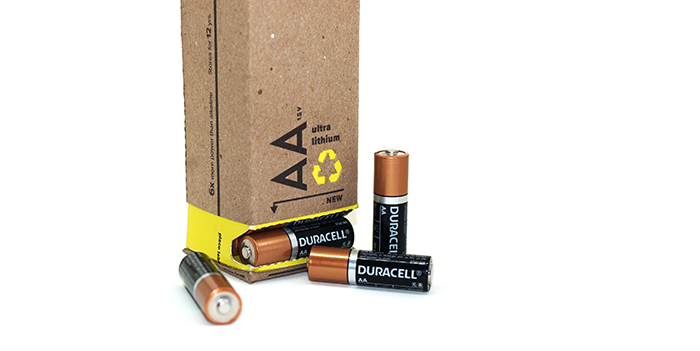Duracell
Duracell
| School: | The Creative Circus |
| Team: | Julia Margolies, Jake Tannery, Melisa Belflower, Dixon Prewitt |
Household battery packaging leaves a lot to be desired.
Much of the traditional manufacturing process is wasteful. It’s deeply rooted in a linear approach—make, use, dispose. e circular economy mindset looks wider, to consider everyone who extracts, builds, uses, and disposes of ings.
Of the 70 million batteries produced per year, only 10% are recycled. Most batteries end up in land lls. Today’s consumer is increasingly concerned with the sustainability of the products they interact with every day & are looking to make purchases they can feel good about.
Even though lithium batteries are a renewable product, most consumers don’t realize they can be recycled. With the current packaging, there’s no system of convenient storage or disposal. Ine cient blister packs don’t make batteries appealing or accessible, nor do they encourage re-use.
is box—made from 100% recycled material—is designed to be as utilitarian & circular as the concept behind it. Everything about the design language communicates what it is and what it does: Easy access to batteries, easy storage of batteries, easy recycling of batteries. Rinse, repeat.
Using a gravity-fed dispenser/storage system, the packaging removes the need for any e ort on the part of the consumer to keep them orderly. Once the batteries have been used up, they can easily be slotted back in the top of the “magazine.” Since used batteries have a designated place to go a er use, no more drawers full of loose & disorganized batteries.
Once all 24 are used & stored, the entire package is designed to be easily sealed up using the included shipping label, and dropped in the mailbox to be sent to a recycling facility, shipping costs covered by Duracell—as few steps as possible for the consumer.
No more ine cient blister packaging, no more disorganized drawers, no more unnecessary waste generated.
is packaging o ers an elegant solution to the problems at hand, using the principles of circular design to make the experience convenient, worthwhile, engaging, and encouraging sustainable consumer behavior at every touchpoint—from the moment it enters the consumer’s hands to the moment it leaves.


